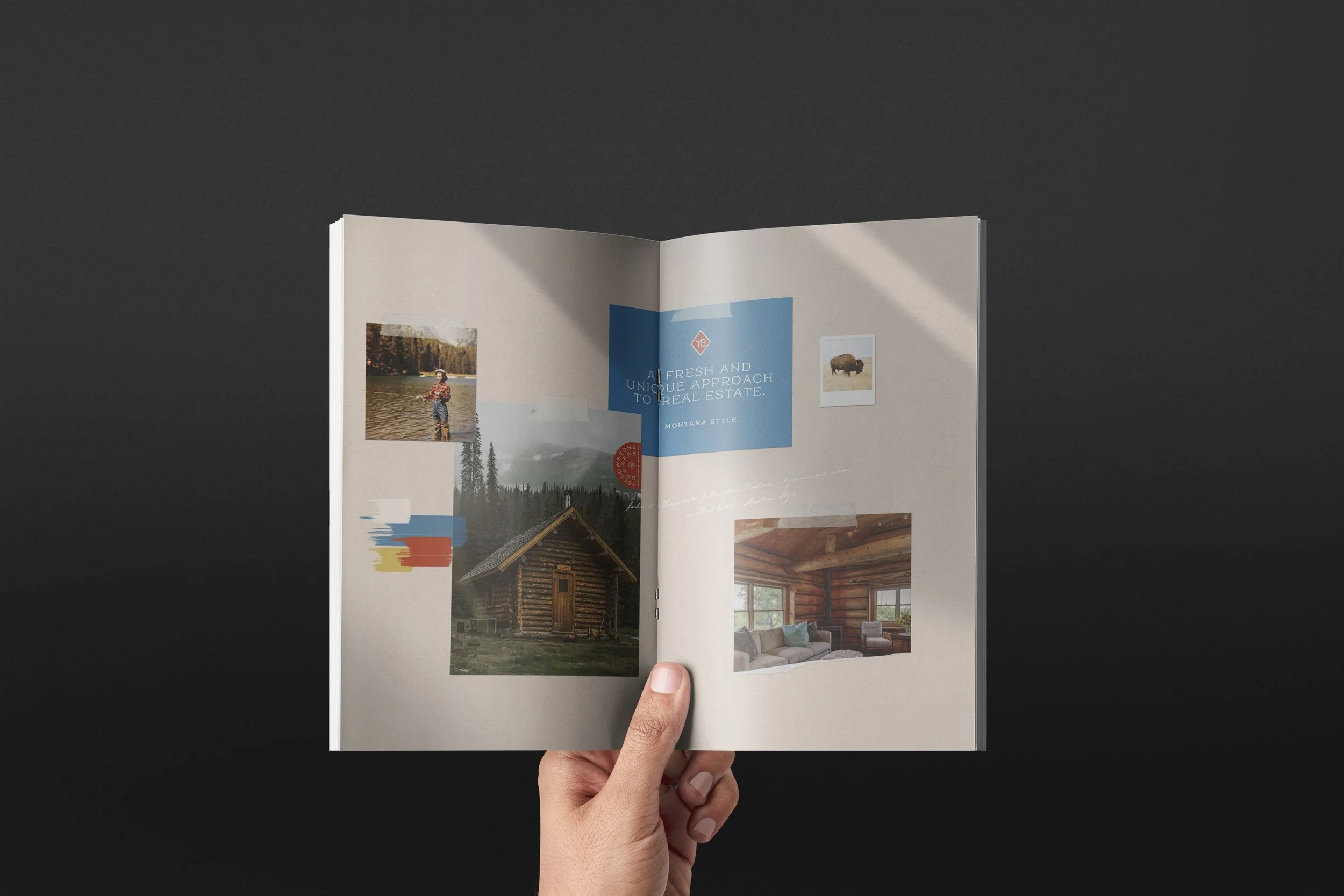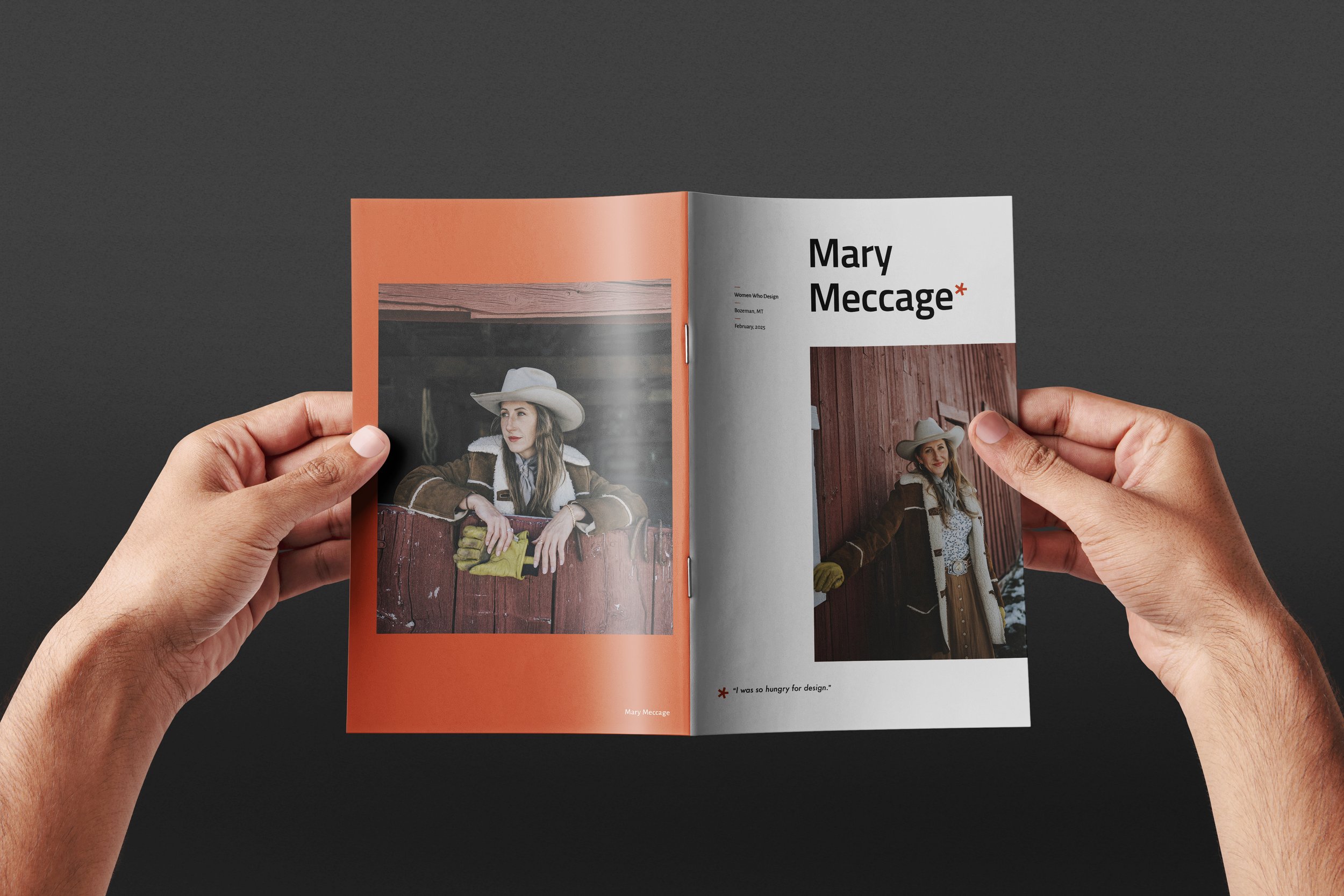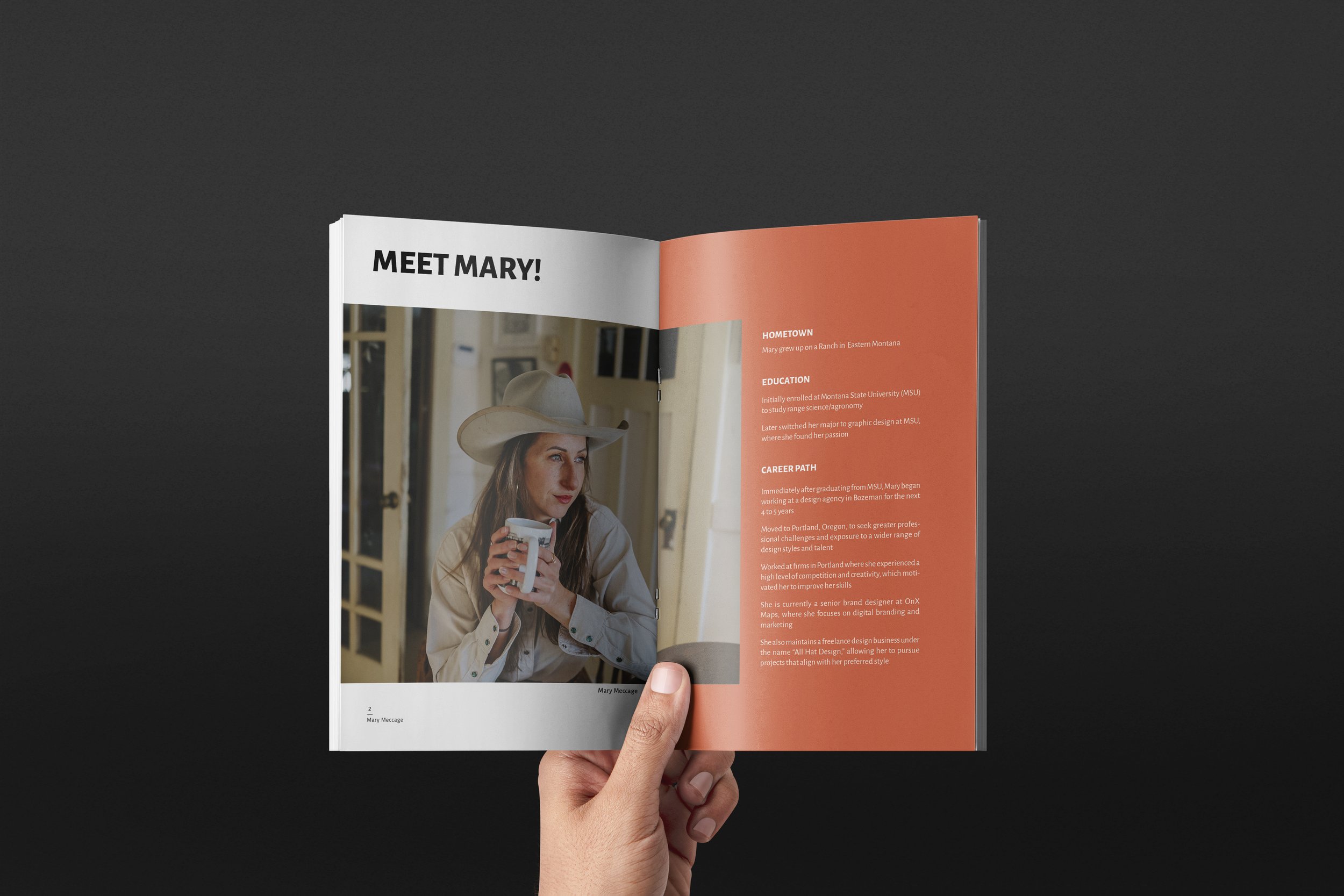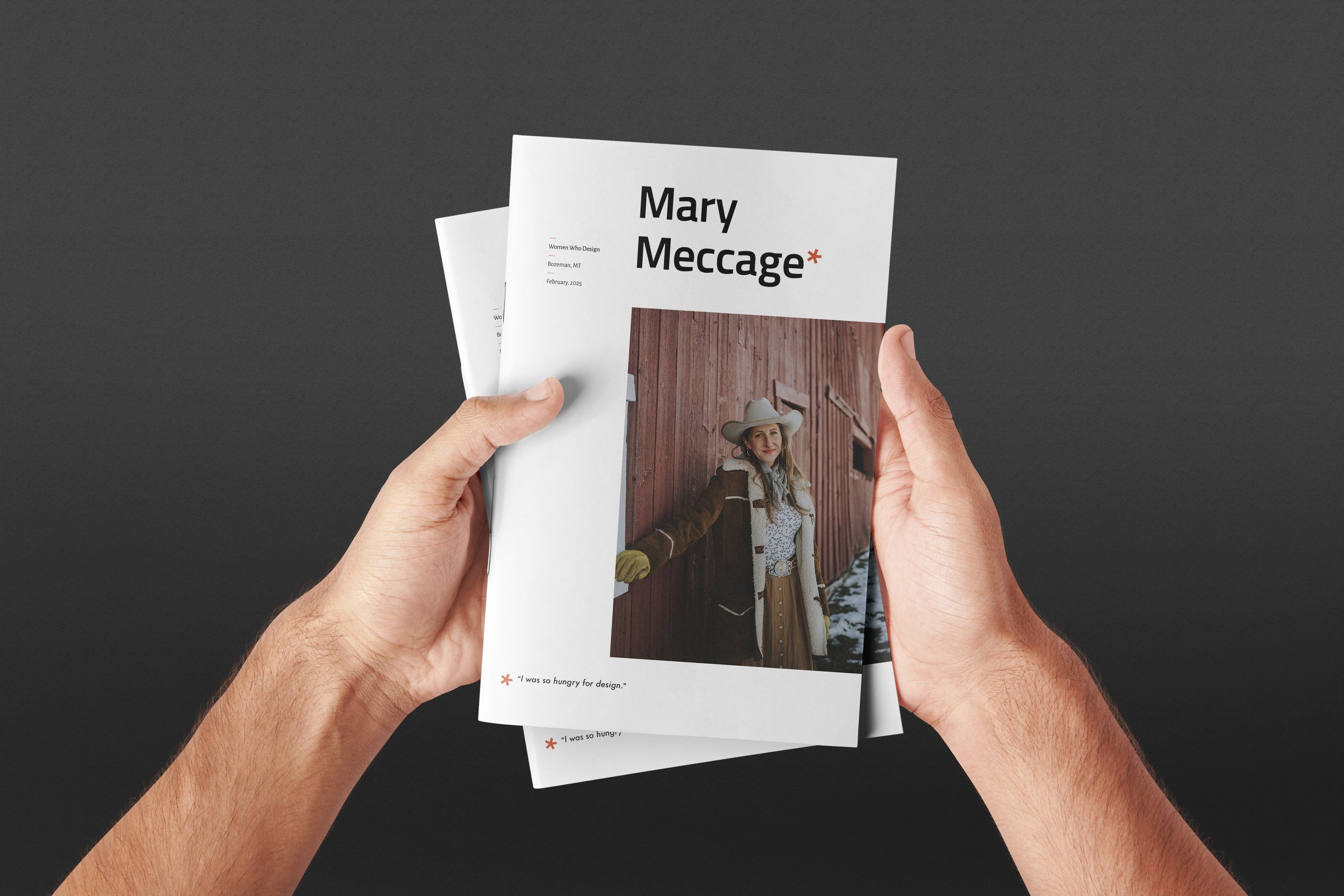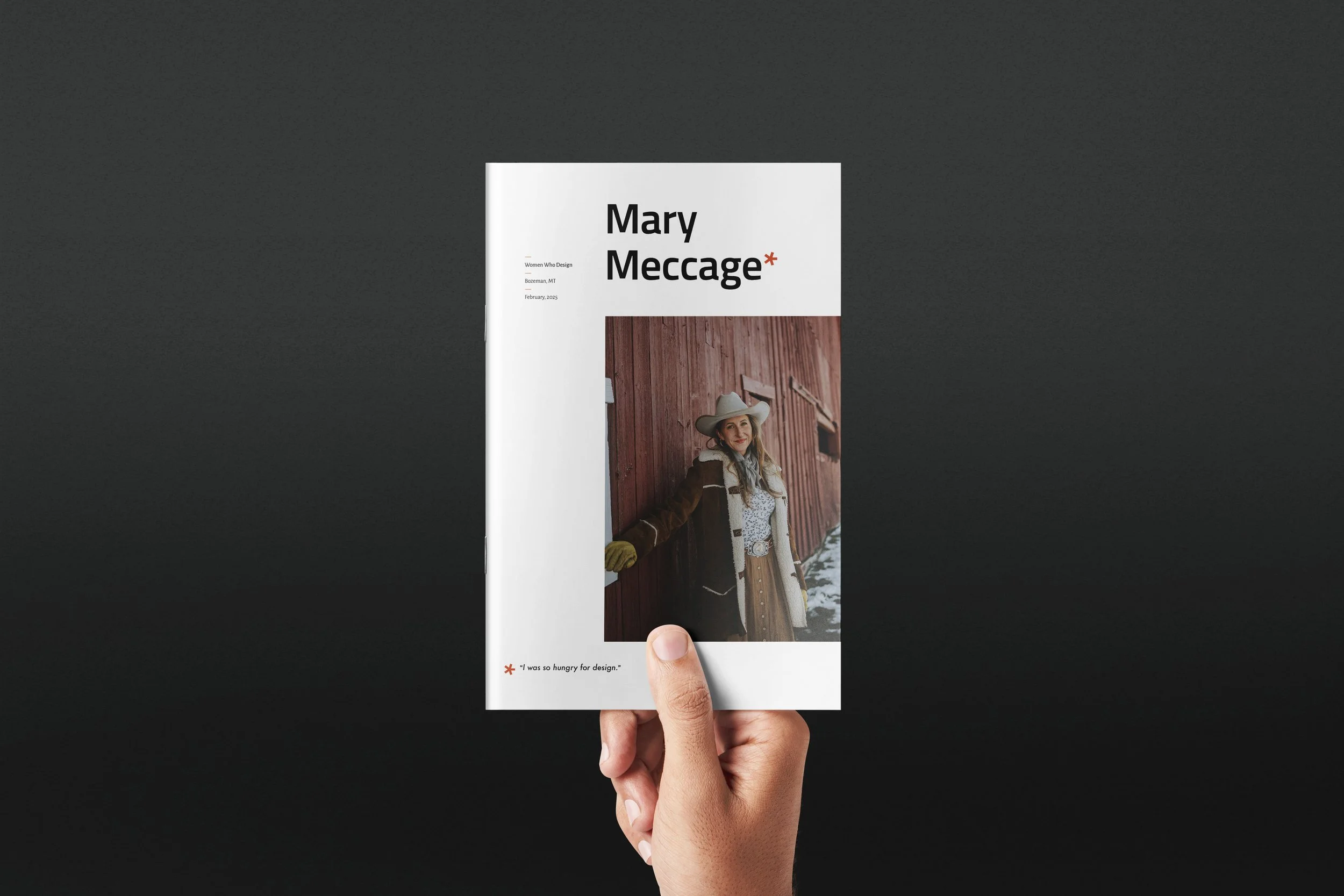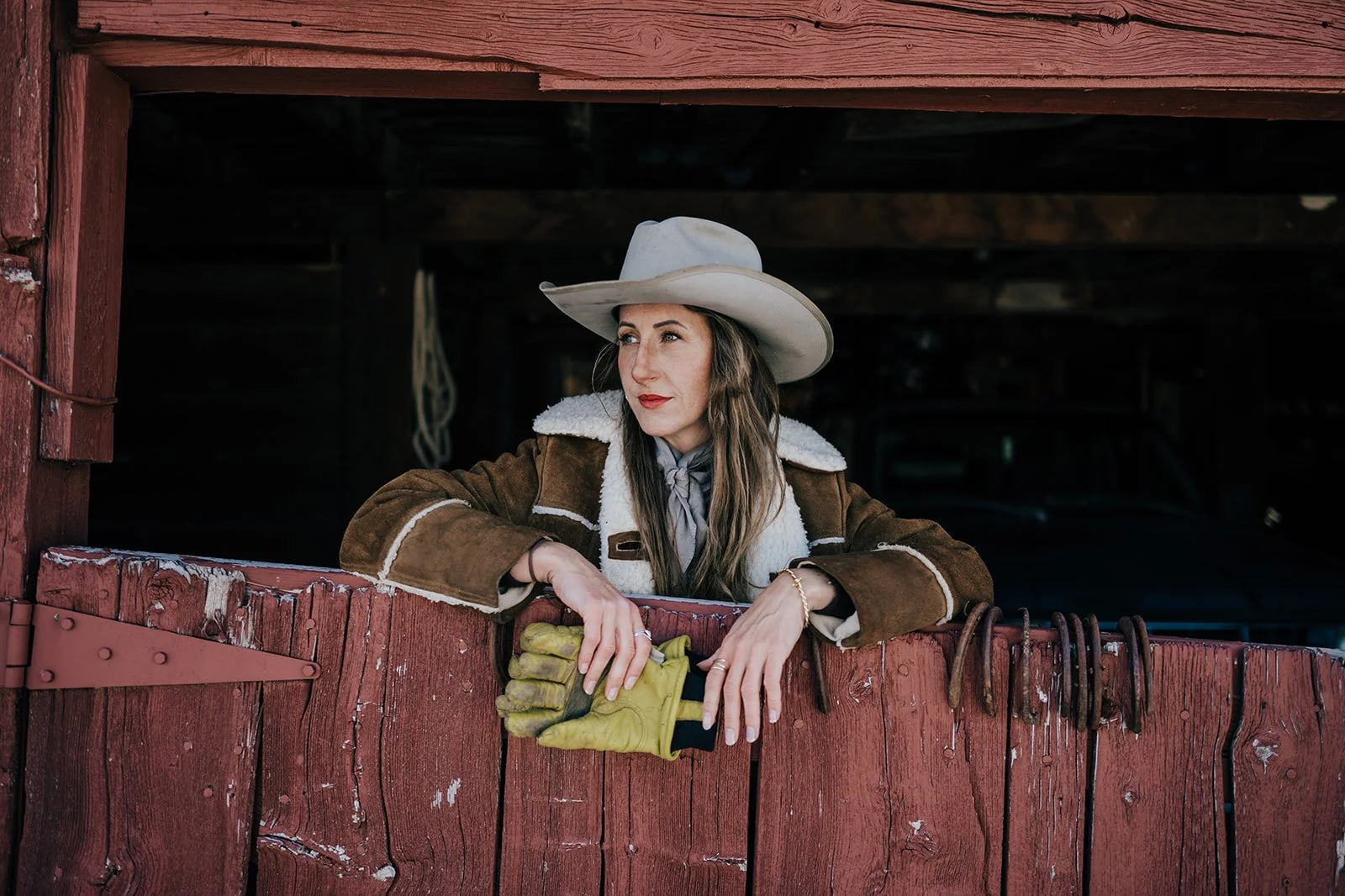mARy
MEccage
“I was so hungry for design.”
“If you want to attract work, do that work.”
FAQs
-
Mary Meccage’s path to design was far from conventional, beginning on a ranch in rural Eastern Montana where creative pursuits were not initially emphasized. Growing up, Mary felt “very limited view of what the options were for me as a woman,” with societal expectations leaning towards traditional roles. She initially pursued range science at Montana State University, but found it unfulfilling. A pivotal “gap year” spent training horses in Australia broadened her perspective, exposing her to diverse cultures and possibilities, and prompting a reevaluation of her path.
Upon returning, Meccage discovered graphic design almost serendipitously, finding a brochure that sparked her interest. “All of those things sound kind of fun. How about we do that?” she recalled thinking. Once she declared her major, a transformation occurred. She described a “flip switched” moment, feeling “so hungry for design” and ignited by the creative process. Even foundational art classes filled her with excitement. This passion propelled her through her studies, fostering a deep love for the field she had unexpectedly found.
Her dedication continued after graduation, as she immediately began working at a local agency. Despite early feelings of inadequacy, she was driven by a desire to improve, noting a gap between her current work and the work she admired. May would constantly ask herself, “Okay, I obviously finished this project, but it’s not something I would put on my inspiration board. What’s different about that?” This self-reflective approach, combined with her passion, shaped her into the accomplished designer she is today.
-
Mary Meccage’s experience as a woman designer in Bozeman has been largely positive, marked by supportive colleagues and mentors. She emphasizes her luck in working with “really lovely people and have really lovely mentors and professors,” both men and women, whom she continues to value. She attributes her pleasant experiences to the quality of the people she’s worked with, highlighting the importance of supportive professional relationships. While she acknowledges that her experience is personal and may not reflect everyone’s, she stresses that she has been “really lucky” in her career.
One potential challenge Meccage mentioned was related to stylistic feedback. Occasionally, she’s received comments that her style is “too soft or it’s not masculine enough” for certain projects. However, she views this not as a detriment, but as a matter of fit. “That just means like the project isn’t a good fit for me, but it is for a different designer,” she explains. She acknowledges that her aesthetic may not align with every client’s needs, and she’s comfortable with that. This perspective reflects Mary’s mature understanding of her own artistic identity and the diverse nature of design work.
Despite working in environments where she was sometimes the only woman, particularly during her time in Portland, Meccage has not encountered significant gender-related obstacles. She recalls a humorous anecdote about her noisy high heels in a predominantly male office, but emphasizes that this was the extent of her challenges. “Other than being like, noisy with my high heels, I’ve never had any problems being a woman designer,” she states. Her overall sentiment is one of gratitude and contentment, highlighting the positive aspects of her professional journey.
-
Mary emphasizes how important it is to be self-aware and following one’s genuine interests. She shares a piece of advice given to her by Dean Adams: “notice what you notice.” This, she explains, means paying attention to what brings you joy in your work, and conversely, what feels draining. “Like, notice if something’s giving you joy or if you’re delighting in creating a certain type of style, like, notice that and lean into it,” she advises. She cautions against forcing oneself into a style or project simply for portfolio building, stressing that “if you don’t like doing it, don’t do it. […] Design is a job, but you also have to enjoy your job.”
Meccage highlights the necessity of demonstrating one’s abilities to attract desired work. Recalling a conversation with Dana Tanamachi, she learned that showcasing relevant skills is crucial. “If you want to attract a work, do that work,” she states. She emphasizes that potential clients cannot guess your capabilities; you must actively display them. This proactive approach, coupled with a genuine passion for the work, forms the cornerstone of Meccage’s advice to aspiring women designers.

